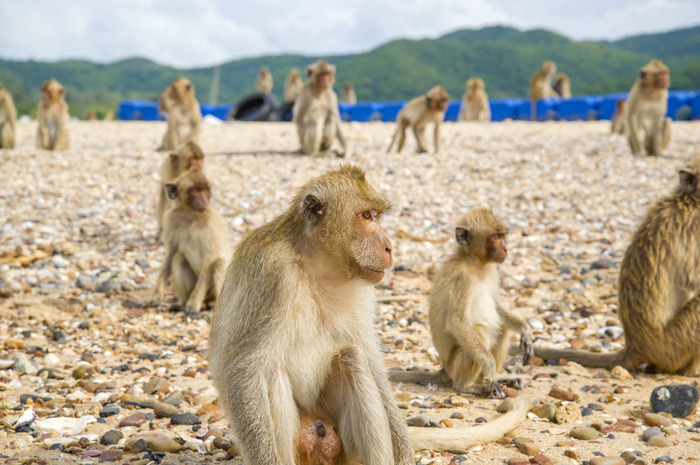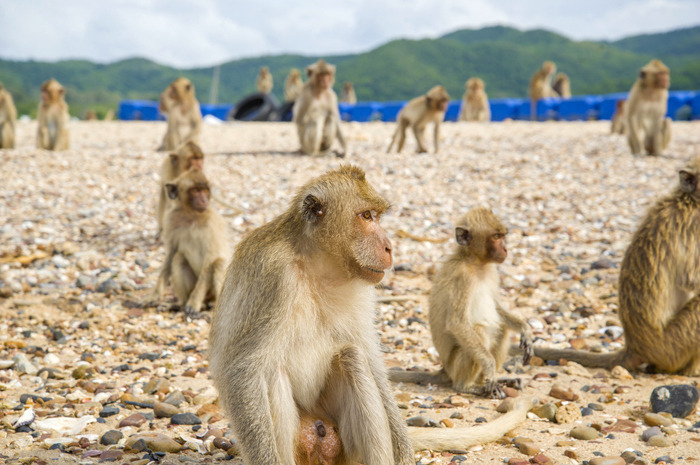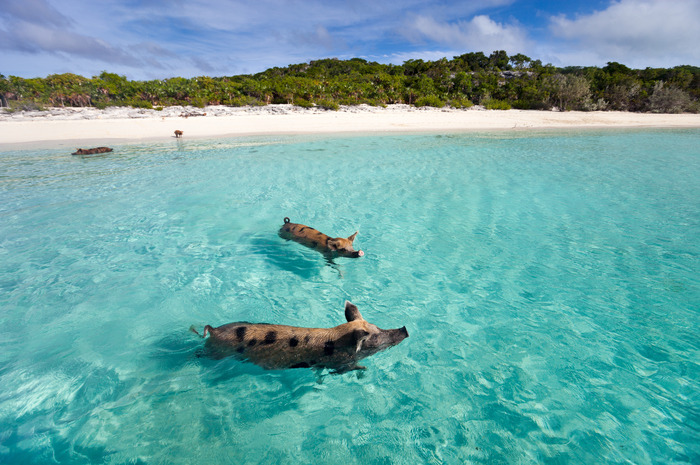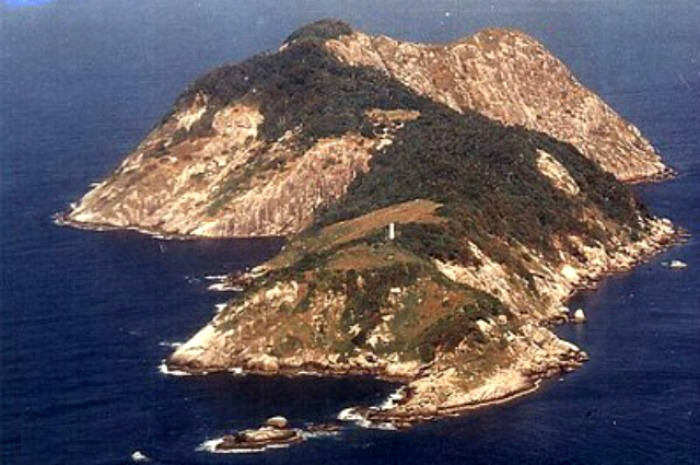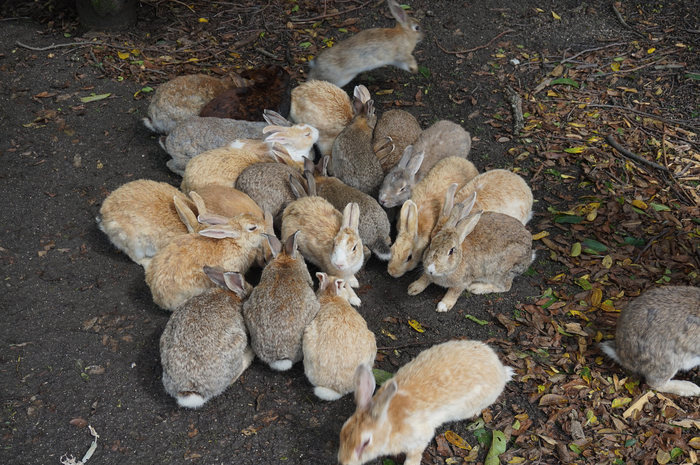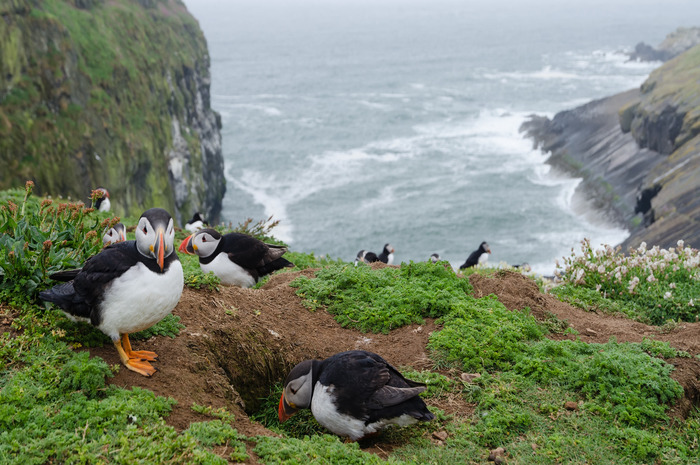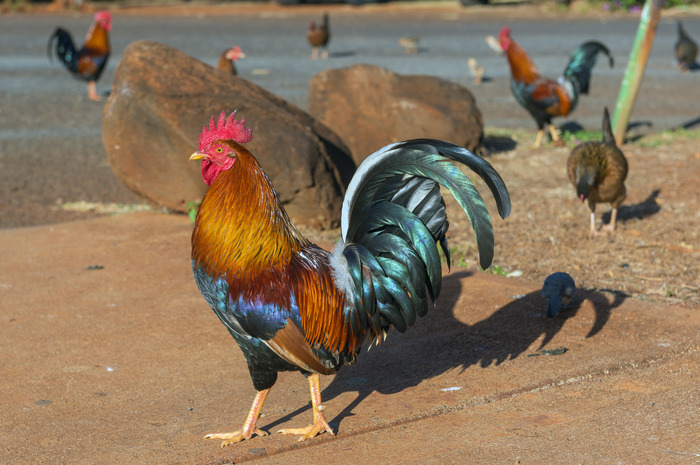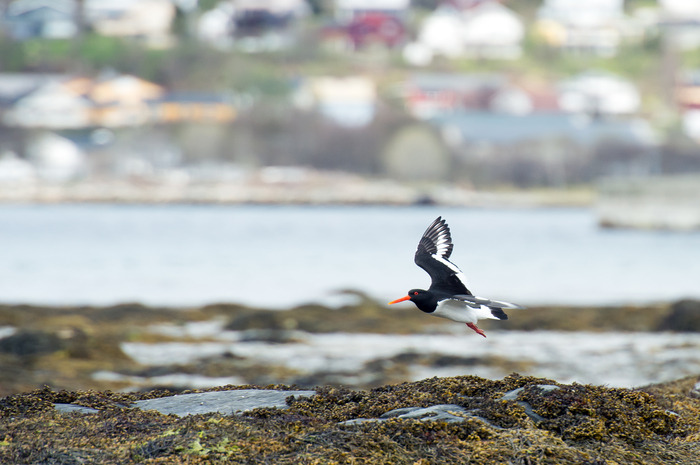Islands Ruled By Animals
Islands Ruled By Animals
Many tourists want to experience a new place the way locals do. In some cases this means bringing treats for monkeys, rabbits, cats and dogs because they will be your hosts. Ecosystems can be unpredictable. Sometimes – seemingly without a reasonable explanation – entire islands are inhabited or overrun by different kinds of cute and friendly, or dangerous, animals. You don't have to visit a jungle to see a place where humans are not in control.
Pig Island, Big Major Cay, Bahamas
This is an uninhabited island known for being populated by many swimming feral pigs. They participate in all kinds of aquatic activities that visitors to The Bahamas usually enjoy, from snorkeling with tropical fish and sea turtles, to shark and eel sightings, to scuba diving, according to Bahamas.com. The special beach hogs are believed to have been either left by sailors or survived a shipwreck.
Cat Island, Tashirojima, Japan
The ratio of cats to people on the Japanese island of Tashirojima is 6 to 1, according to Bored Panda. People believe that cats are a good luck charm and take care of them. Locals even launched a campaign online, encouraging people to send food. The cats were originally brought to the island to help with the mice problem as they would horde fishing boats.
Assateague Island, Maryland
Assateague Island, where wild ponies travel the beaches of this 37-mile uninhabited island, near Chincoteague, split between Virginia and Maryland. One legend says the ponies survived a shipwreck. The "wild" horses are actually feral animals, meaning that they are descendants of domestic animals that have reverted to a wild state, according to NPS.
Seal Island, False Bay, South Africa
Seal Island, which is almost 4 miles long, in False Bay is home to well over 60,000 howling and squalling Cape fur seals. "They're top of the menu for the great white sharks that patrol this area, and there's always a chance to see a spectacular (and bruising) encounter between the two species." The island has no vegetation. The only time people have tried to set a permanent structure was a radar in World War Two, but it was wrecked soon after.
Snake Island, Ilha de Queimada Grande, Brazil
Snake Island is one of the world's deadliest places. Situated just 20 miles off the coast of São Paulo, visiting is not allowed. There are between one and five snakes per square meter (3 feet), and the most venomous snakes live there. The golden lanceheads are to blame for about 90 percent of all snakebite deaths in the country.
Rabbit Island, Ōkunoshima, Japan
Okunoshima is a small island with a circumference of a mere 2.5 miles. More than 100,000 people visit every summer too see the more than 300 wild rabbits descended from a small group of domesticated rabbits left here about 40 years ago, according to Japan Visitor. In order to keep the population from declining, all other animals, including cats and dogs, are banned from the island.
Deer Town in Nara, Japan
Nara is home to hundreds of freely roaming deer. "Considered in Shinto to be messengers of the gods, Nara's nearly 1,200 deer have become a symbol of the city and have even been designated as a natural treasure, according to Japan Guide. Some deer have even learned to bow to visitors, asking to be fed.
Monkey Island, Puerto Rico
You won't have to walk far or for too long to see the cute creates on Monkey Island (officially Cayo Santiago), which is a small island, about half a mile off of the eastern coast of Puerto Rico. About 1,200 free-roaming Rhesus monkeys live there. The monkeys are the offspring of an original group of monkeys imported from India that were used for scientific research in 1938. The island is still a research base.
Monkey Island of Homosassa, Florida
This is a very tiny chunk of land sitting in the Homosassa River with about five spider monkeys as its inhabitants, according to Roadside America. The monkeys climb on platforms, swing from ropes, and clamber around the base of a small replica lighthouse. A ring of floats and barriers discourages boaters from landing on the island or approaching the animals.
Entry Island - Ile d'Entrée, Havre-Aubert in Canada
You will find many cows and wild horses on Entry Island. It is the only inhabited island not connected to the rest of the island chain, so it is only reachable by ferryboat, according to Atlas Obscura. The animals are free to wander everywhere. People build fences around their homes to protect themselves and to keep them from bothering their "visitors."
Morgan Island, South Carolina
Only monkeys are allowed on Morgan Island in South Carolina. More than 3,500 are roaming the land – about 2,000-acres – and hanging from the trees. The island is home to one of only two Rhesus monkey colonies in the country, according to Island Packet. The monkeys inhabited the island, which is a federally area, for about 30 years. Only researchers are allowed to go there to tag the monkeys, and take some for medical testing.
Ursula Island, the Philippines
Palawan is best known for its beaches, but forests are an amazing attraction. Ursula Island Game Refuge and Bird Sanctuary features seedlings and saplings which are commonly present at lowland forests. Visitors are only allowed to visit the area after securing permits from the Provincial Environment & Natural Resources Office (PENRO) of Palawan, and even then it is forbidden to enter the fiercely protected wooded area, according to Atlas Obscura.
Skomer Island, Wales
This is a wildlife paradise. The island is surrounded by some of the richest waters for wildlife off the British Isles, from delightfully colored sea slugs to magnificent cetaceans, according to Welsh Wildlife. The island is famous for its puffins, but there is so much more to the bird paradise including manx shearwaters, dolphins, harbour porpoises, Atlantic grey seal, razorbills, gannets, fulmars and the unique Skomer Vole.
Kauai, Hawaiian Islands
The chicken population in Kauai has gone out of control. The wild roosters, hens, and chicks have no natural predators. They have adapted to feed on cat food, garbage, and native bugs. A study suggests that Kauai's chickens may be mixtures of chicken ancestors brought from Polynesia hundreds of years ago, and the domestic kind that escaped during hurricanes.
Runde Island, Norway
The small rocky Runde Island has no more than 150 inhabitants, but from February to August every year the nesting season takes place and more than 500,000 birds gather on the island, the most famous of which are the puffins.
